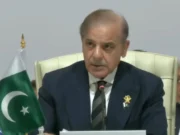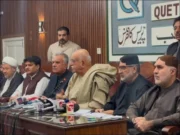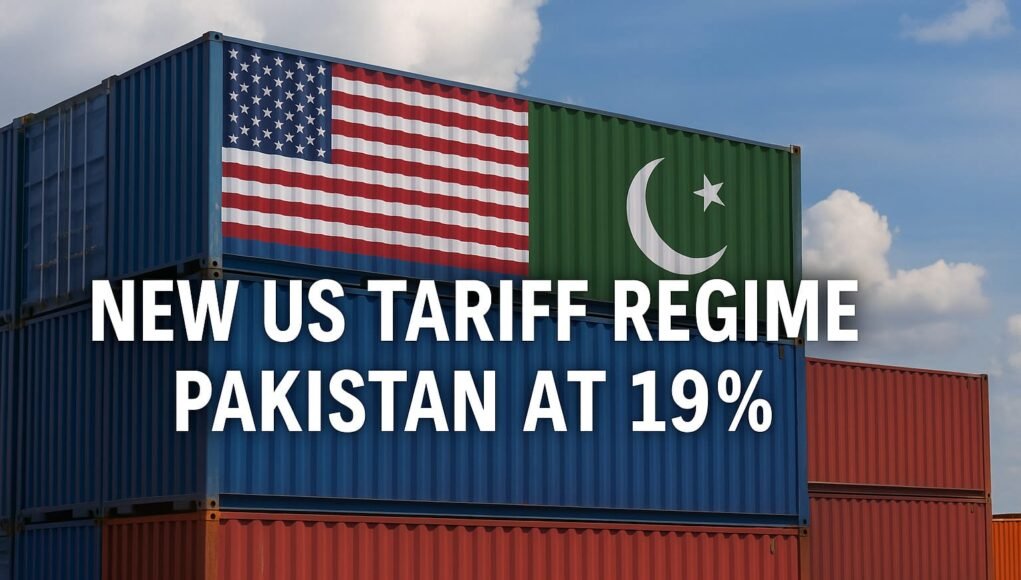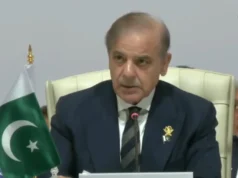ISLAMABAD/WASHINGTON — In a major diplomatic and economic development, Pakistan has successfully negotiated a reduced 19% tariff on its exports to the United States, down from an earlier proposed 29%, as part of a new trade agreement concluded just before the expiration of U.S. President Donald Trump’s August 1 tariff deadline.
The breakthrough came after late-night talks in Washington led by Finance Minister Muhammad Aurangzeb, who also announced a strategic joint venture with the U.S. for the development of Pakistan’s oil reserves. Trump hailed the oil agreement on his social media platform Truth Social, calling it part of “excellent deals” struck with selected partners.
“We have just concluded a deal with the country of Pakistan, whereby Pakistan and the United States will work together on developing their massive oil reserves,” Trump said.
The newly signed trade agreement comes as part of a broader tariff realignment by the Trump administration, affecting 69 trading partners globally with new import duties ranging from 10% to 41%. Countries failing to negotiate or align with U.S. strategic and economic interests faced significantly steeper tariffs. Brazil was hit with a 50% tariff, Canada 35%, India 25%, and Vietnam 20%.
Pakistan emerged as one of the few countries to secure not only a tariff reduction but also direct investment prospects, prompting optimism in Islamabad.
Tariff Relief a ‘Strategic Win’
In a statement issued on August 1, Pakistan’s Ministry of Finance said the 19% rate reflects a “balanced and forward-looking approach by U.S. authorities, keeping Pakistan competitive relative to other South and Southeast Asian countries.”
“This tariff level is expected to support Pakistan’s export potential, especially in key sectors such as textiles, which remain the backbone of the country’s export economy,” the statement read.
Pakistan exported over $5.5 billion worth of goods to the U.S. in the first 11 months of the outgoing fiscal year, with textiles alone accounting for 92% of those exports.
Pakistan Gains Regional Advantage
Under Trump’s tariff regime:
- India faces a 25% tariff after talks stalled over its agriculture sector and Russian oil ties.
- Bangladesh, Sri Lanka, and Vietnam face 20% duties.
- Afghanistan was assigned a 15% tariff.
- Indonesia shares the same 19% rate as Pakistan.
CNN reported that Pakistani officials were “relieved” that their country fared better than neighboring India, easing prior concerns that New Delhi was isolating Islamabad diplomatically and economically.
Oil Partnership and Investment Potential
According to Adviser to the Finance Minister Khurram Schehzad, Pakistan may be the only country among those affected by the new tariffs to also receive an offer of U.S. investment.
“This deal signals a strategic deepening of economic ties and shared growth,” Schehzad said in a televised interview, calling the U.S. interest in Pakistan’s energy sector a “game-changer.”
Schehzad emphasized the importance of this development given Pakistan’s heavy reliance on energy imports, noting the potential to not only fulfill domestic needs but also become a regional exporter of oil and gas.
Key Pakistani firms like OGDCL and PPL, already involved in major mineral projects like Reko Diq, are expected to play a role in this expanded U.S.-Pakistan energy cooperation.
Stock Market Reacts Positively
The Pakistan Stock Exchange (PSX) responded favorably to the news. After early morning losses, the KSE-100 index rebounded, gaining 483 points to reach 139,873.49, lifted by investor confidence in the new trade deal.
Global Context: Tariffs Target Friends and Foes Alike
President Trump, leveraging emergency powers under the 1977 International Emergency Economic Powers Act, has justified the sweeping tariff changes by citing imbalances in trade and national security risks. The executive order specifies:
- Canada: Tariffs raised from 25% to 35% due to “lack of cooperation” on fentanyl trafficking.
- Brazil: Hit with a 50% tariff over its treatment of former president Jair Bolsonaro.
- Mexico: Granted a 90-day extension to negotiate, avoiding a 30% tariff for now.
- China: Facing an August 12 deadline for a final agreement, with preliminary terms already underway.
The new duties have already impacted global markets, although reactions were more muted this time than when Trump first floated the idea in April. U.S. consumer goods prices have started rising, with the Commerce Department reporting significant increases in household items and clothing in June.
Looking Ahead: Strategic and Economic Realignment
Trump’s executive order warned that countries failing to take “adequate steps” or retaliating could face further punitive actions. However, in his statement, Trump noted that several “excellent deals” had been made and more were expected in the coming weeks.
For Pakistan, the current deal represents a rare diplomatic and economic convergence under Trump’s transactional foreign policy framework. Officials are now urging exporters to capitalize on the opportunity through aggressive marketing and diversification beyond textiles.
“The import bill can be reduced, the dollar can be impacted, overall employment generation, and GDP can be improved,” Schehzad concluded.



































